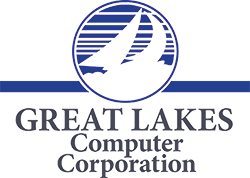Introduction: The New Reality of Modern Manufacturing
The modern manufacturing floor looks nothing like it did 20 years ago. Machines now talk to servers. Robotics are tied to cloud systems. Production schedules depend on real-time data.
Technology has become the nervous system of manufacturing — and when it fails, everything grinds to a halt.
In industries where every minute of downtime equals lost output, IT isn’t a support function anymore — it’s mission control.
Yet many manufacturing and industrial businesses still treat IT as an afterthought. The result? Downtime spikes, cybersecurity gaps widen, and maintenance costs spiral.
Great Lakes Computer (GLC) has seen this firsthand in Keeping the Wheels Turning: How Manufacturers Can Eliminate Downtime with Better IT Management. The takeaway is clear: technology can’t be treated like a wrench — it has to be managed like a system.
The Hidden Cost of Downtime in Manufacturing
Downtime is more than idle machines — it’s delayed orders, lost profit, missed deadlines, and frustrated customers.
According to industry research, the average cost of unplanned manufacturing downtime is $260,000 per hour.
For small to mid-sized plants, that’s devastating.
Common causes:
- Outdated networked equipment
- Weak or unmonitored IT infrastructure
- System updates missed due to production urgency
- Cyberattacks halting connected devices
In Accelerating Business Success: The Importance of a Prompt IT Managed Service Provider Response, GLC underscores how slow tech responses multiply operational loss. Speed matters — not just in production, but in prevention.
💡 GLC Insight:
Proactive maintenance, not reactive repair, saves both time and cost. Regular monitoring detects performance dips before machines fail.
The Rise of Smart Factories — and Smart Risks
The Industrial Internet of Things (IIoT) has transformed manufacturing. Sensors track output. Machines self-diagnose. Data analytics optimize performance.
But every new connected device is a potential vulnerability.
As GLC points out in Why SMBs Can’t Afford to Treat Cybersecurity as an Afterthought, small and mid-sized manufacturers are now a favorite target for cybercriminals — because they hold valuable data but often lack strong protection.
Cyber threats to watch:
- Ransomware shutting down production lines (The Ransomware Tide Is Rising).
- Phishing attacks stealing credentials (Phishing Emails: Would You Take the Bait?).
- Supply chain compromises — attackers infiltrate through vendors.
- Legacy systems with outdated firmware still controlling modern lines.
⚙️ Best Practices for Manufacturers:
- Segment operational networks from office networks.
- Use managed detection and response (MDR) tools.
- Enforce strong multi-factor authentication.
- Train every employee — from floor operators to finance — to spot phishing.
Great Lakes Computer leverages solutions like SentinelOne, discussed in Choosing Excellence: Why Great Lakes Computer Trusts SentinelOne, to provide automated protection that learns from threats in real time.
Hardware Reliability: The Overlooked Backbone
Production lines rely on equipment that must run flawlessly — not just mechanical tools, but the technology that keeps them synchronized.
GLC’s IT Hardware Maintenance and Repair ensures manufacturers keep critical systems stable, from servers to control PCs to industrial printers.
Top hardware pain points in factories:
- Outdated control servers slowing automated workflows.
- Industrial printers failing mid-production.
- Limited spare inventory leading to downtime delays.
Solutions:
- Preventive maintenance schedules.
- Vendor-certified component replacements.
- Onsite support contracts with guaranteed response times.
The Role of Data in Industrial Operations
Modern plants are data-driven. Production metrics, maintenance alerts, energy efficiency reports — all rely on IT systems to collect and process data.
When those systems are mismanaged, decision-making suffers.
GLC’s Simple Solutions to Productivity Blockers discusses how small inefficiencies, when compounded, cost hours each week. In manufacturing, that equals tons of lost product.
Data integrity matters because:
- Inaccurate data = bad production forecasting.
- Lost data = regulatory non-compliance.
- Unsecured data = stolen intellectual property.
Action Steps:
- Use centralized cloud data management.
- Encrypt data both in transit and at rest.
- Back up production data daily and test restores. (Nothing Is More Important Than Data Backup)
Disaster Recovery: From Factory Floods to Cyber Failures
Whether it’s a hardware crash or a ransomware attack, disaster recovery in manufacturing means survival.
In Disaster Protection: Why Your Business Needs BCDR Now, GLC explains that having a backup isn’t enough — you must be able to restore operations quickly.
Steps to resilience:
- Test your backups quarterly.
- Maintain offsite and cloud backups.
- Create a written continuity plan for production recovery.
- Assign clear disaster response roles.
The Human Side: Empowering IT and Production Teams
Technology only works as well as the people managing it. When IT teams are overworked, updates and monitoring slip. When production staff don’t understand security protocols, mistakes happen.
GLC’s Build a Human Firewall for Your Business highlights how employee awareness is as vital as firewalls or antivirus software.
Practical ideas:
- Cross-train production staff on basic IT hygiene.
- Give IT teams visibility into production systems.
- Recognize and reward cyber awareness on the floor.
The Compliance Factor
Manufacturers face a growing list of compliance standards — from data security to industry-specific certifications.
Whether it’s NIST, CMMC, or ISO 27001, falling behind can mean losing contracts.
GLC’s Beyond Compliance: Why Professional Service Firms Need a Proactive Cybersecurity Strategy applies equally to manufacturers: compliance isn’t paperwork — it’s proof of reliability.
Cloud Adoption in Industrial Environments
Once hesitant, manufacturers are now embracing cloud computing for flexibility and analytics. But the transition must be secure.
In Cloud Computing in 2021, GLC explores how hybrid models let companies balance control with scalability.
Best Practices:
- Move non-critical data first.
- Use cloud backups for design and production data.
- Implement secure remote monitoring for equipment.
From Reactive to Proactive: Building Future-Ready IT
Manufacturing leaders often say, “We’ll deal with IT later.” But later often comes after a costly outage or data breach.
Shifting from reactive to proactive IT transforms everything: fewer breakdowns, stronger security, and a competitive edge.
GLC’s Crucial Managed IT Services Benefits for Your Business outlines how proactive management saves time and boosts profits.
The payoff:
- 40% reduction in downtime.
- Faster production ramp-ups.
- Happier employees and customers.
Your Manufacturing IT Roadmap
- Assess your systems – Map every connected device.
- Modernize infrastructure – Replace aging hardware.
- Secure your network – Firewalls, segmentation, MFA.
- Train your team – Cyber awareness for all.
- Partner with experts – Let a managed provider handle complexity.
- Plan for growth – Design scalable, cloud-integrated IT.
Final Word
In manufacturing, every minute counts — and every minute of downtime costs more than you think. The factories of the future aren’t defined by bigger machines, but by smarter, safer, and more connected systems.
Great Lakes Computer helps manufacturers achieve that by combining proactive IT management, advanced cybersecurity, and reliable hardware maintenance — all tailored to your operations.
Because when your machines, people, and technology work together, your business runs at full strength.
Explore related resources:
Disaster Protection: Why Your Business Needs BCDR Now
Keeping the Wheels Turning: How Manufacturers Can Eliminate Downtime with Better IT Management
Why Cyber-Ready Now Is Not Enough

